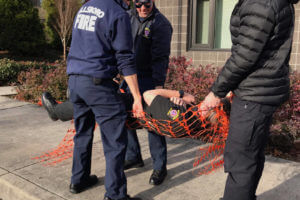
Improvised TECC/TCCC by the Numbers
- Posted by Mike Shertz MD/18D
- Categories Improvised
🕖 Reading Time, 6 minutes
It’s always better to have proven, dedicated medical equipment in an emergency. But when you don’t, you improvise.
Why use improvised materials at all? Eventually you could find yourself in a situation when you will not have the supplies that you would prefer to use to treat a casualty.
In an MCI, you could have depleted all of your equipment.
You may find yourself in a location that you do not have your usual gear. It might not be allowed.
Placing a tourniquet on a wounded casualty before they are in shock has a 20-fold greater survival than waiting for someone to arrive with commercial equipment and putting that on after they’re in shock.
There is literature showing 80% of combat fatalities died within 10-minutes of wounding: waiting for someone to arrive with the equipment you want to use may result in watching your casualty die.
Don’t just make something up, do something that might work.
























Dr. Mike Shertz is the Owner and Lead Instructor at Crisis Medicine. Dr. Shertz is a dual-boarded Emergency Medicine and EMS physician, having spent over 30 years gaining the experience and insight to create and provide his comprehensive, science-informed, training to better prepare everyday citizens, law enforcement, EMS, and the military to manage casualties and wounded in high-risk environments. Drawing on his prior experience as an Army Special Forces medic (18D), two decades as an armed, embedded tactical medic on a regional SWAT team, and as a Fire Service and EMS medical director.
Using a combination of current and historical events, Dr. Shertz’s lectures include relevant, illustrative photos, as well as hands-on demonstrations to demystify the how, why, when to use each emergency medical procedure you need to become a Force Multiplier for Good.



